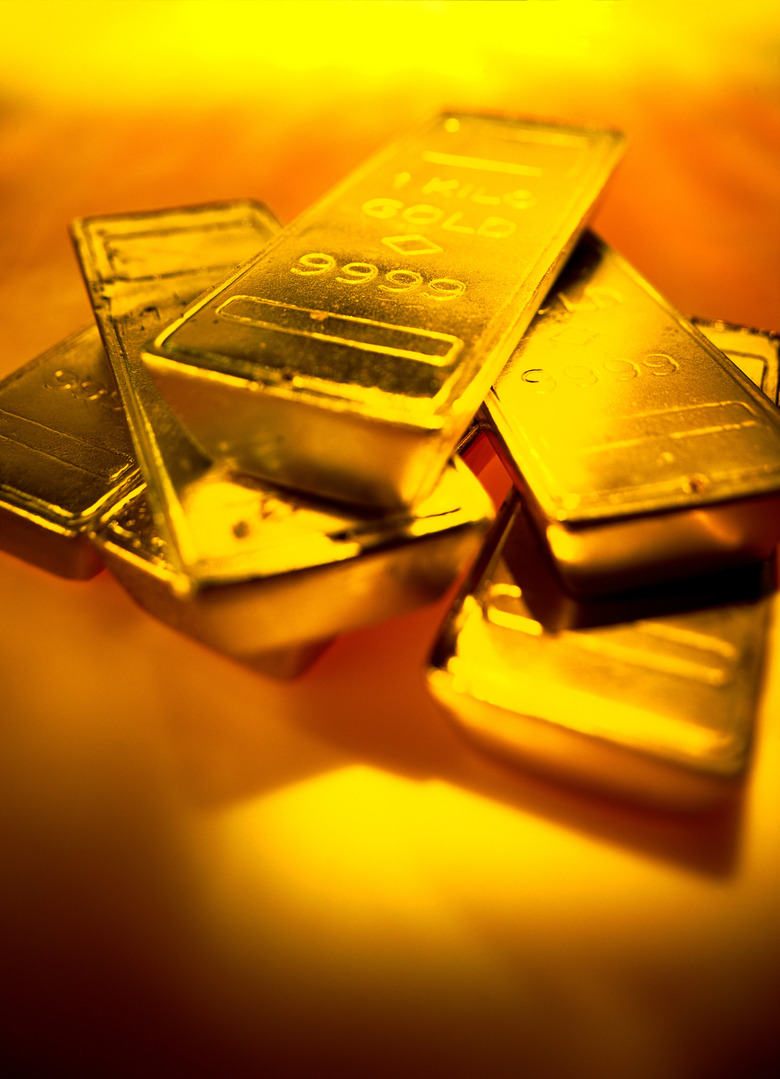How To Leach Gold Ore With Chlorination
Gold can be leached from stone through alkaline or acidic-based products, including halogens, such as chlorine, iodine and bromine. Halogens are reactive, non-metal elements with seven electrons in their outer shell which allow them to easily combine with other elements. The use of chlorine is both the cheapest and most plentiful method for leaching gold. When you mix sodium chloride and hydrochloric acid together, you produce a form of electrolysis that removes gold from rock and soil.
Step 1
Grind the ore so that all parts of the ore are open to the HCL mixture. Add your ore to a plastic-tub cement mixer along with 10 pounds of river rock and turn the mixer until the ore is 200 mesh or more. 200 mesh means there are at least 200 particles in one square inch of ore. Remove the river rock, which will still be large.
Step 2
Place the gold ore in the cement mixer. Pour in the hot water, bleach and HCL. The mixture should be 15 percent sodium hypochlorite and 33 percent hydrochloric acid. The mixture should cover the rocks, so multiply the mixture until the rock is covered.
Step 3
Insert the ORP meter so the probe side is in the water mixture. An ORP meter is used to measure oxidation, which is required to break the gold out of the rock. In fact, according to Mine-Engineer.com, the amount of oxidation is directly proportional to the rate of gold leaching. The meter tells you how effective the chlorine is while it is oxidizing. Add HCL until the ORP reaches 1,000. Add only a little at a time to keep the mixture from boiling, fizzing or expelling too much gas.
Step 4
Agitate the bucket and rocks slowly using the cement mixer. Aerating the mixture speeds up the leaching process, because it adds oxygen. Continue to agitate the bucket until the ORP meter drops to 400.
Step 5
Keep the ORP meter around 1,000, but do not let it drop below 400. The HCL is a chemical that steals electrons from the substances it is mixed with. It will show a reaction as long as there are electrons to steal, which is what happens when the gold is separated from the rock. At 400, the HCL stops leeching the gold. The solution is the most efficient at 1,000, because the HCL is active.
Step 6
Continue steps 3 and 4 until the ORP meter does not move when you add HCL. The ORP meter is measuring the voltage between the HCL and the salt as it removes the gold from the rock. When the meter no longer changes, all of the gold has been separated. The rock and gold have been separated, but let the sediments sit in the mixture until it settles to the bottom.
Step 7
Filter the sediment out of the HCL solution using a coffee filter in a funnel or a piece of canvas. The gold is in liquid form in the HCL. Add sodium metabisulphate to force the gold to become metallic gold again. The sodium metabisulphate lowers the pH of the solution, turning the gold liquid into gold powder. Filter the water again using a fine gold filter and dump the water into another bucket and not onto the ground or down the drain.
Step 8
Add sodium bicarbonate to the HCL mixture slowly. Add a little, let it fizz out and then add a little more. When the mixture does not fizz any longer, and it has a pH of 7, it is safe to pour down the drain, according to the Massachusetts Department of Environmental Protection.
Things Needed
- Sodium hypochlorite (bleach)
- Hot water
- Hydrochloric acid (HCL)
- Oxidation-reduction potential meter (ORP)
- Citric acid wash
- Plastic bucket or garbage can
- Plastic-tub cement mixer (optional)
- Gloves
- Safety goggles
- Face mask
- Metal cathode
- Coffee filter (optional)
- Canvas
- Funnel
- Citric acid wash
- Sodium bicarbonate
- Fine gold filter
- pH meter
- Sodium metabisulphate
Warning
Prepare the mix outdoors and stay upwind, because chlorine gas, which can burn lung tissue, is generated with the mixture. Do not get the mixture on your skin, because it can eat your skin. Wear protective gloves, goggles and a face mask while you are working with the solution.
Cite This Article
MLA
Smith, Rebekah. "How To Leach Gold Ore With Chlorination" sciencing.com, https://www.sciencing.com/leach-gold-ore-chlorination-10075085/. 24 April 2017.
APA
Smith, Rebekah. (2017, April 24). How To Leach Gold Ore With Chlorination. sciencing.com. Retrieved from https://www.sciencing.com/leach-gold-ore-chlorination-10075085/
Chicago
Smith, Rebekah. How To Leach Gold Ore With Chlorination last modified March 24, 2022. https://www.sciencing.com/leach-gold-ore-chlorination-10075085/
